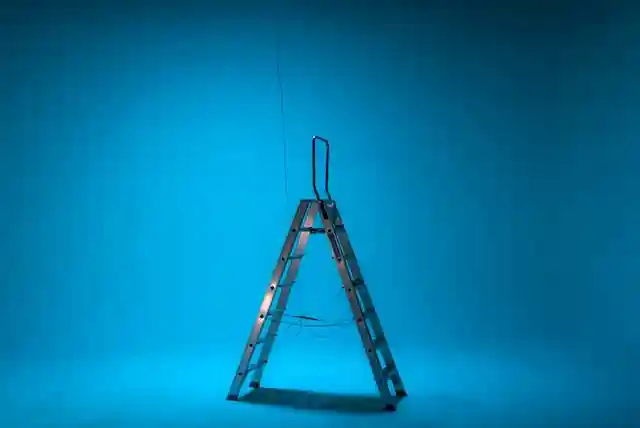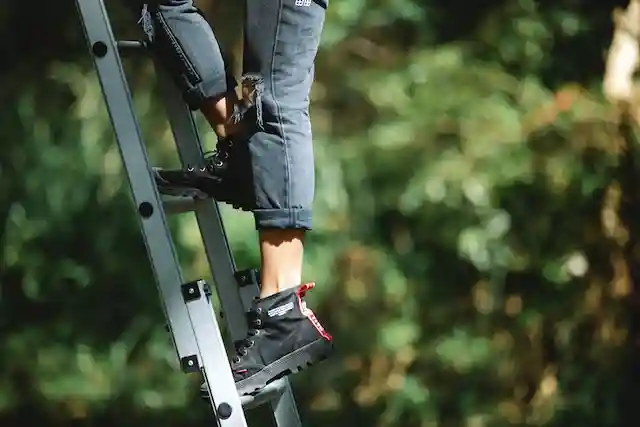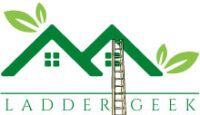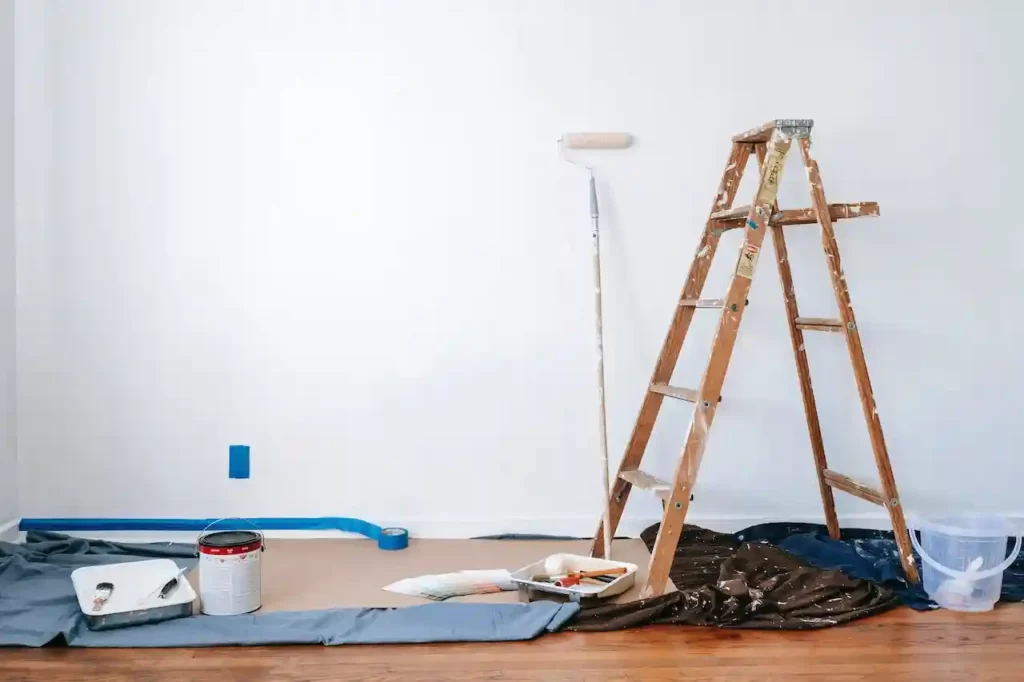When on the job, you must take reasonable precautions to ensure the safety of any ladders or stepladders you employ by inspecting and maintaining your ladder. In the event of an accident brought on by using a defective ladder, the user could face severe consequences. There’s a chance it might do serious, even fatal, harm.
If you’re in charge of people who use ladders for work, you must ensure they get regular and thorough inspections. Ensuring this will keep your employees and business safe.
Who, though, is capable of performing secure ladder checks? How frequently do you need them? And how exactly do they function? Here, we’ll explain everything you need to know about ladder inspection and provide answers to the questions you may have.
- There are two approaches to analyzing a ladder:
- Visual analysis
- Examining for Quality Before Use
- Guidelines for Safe Ladder Use
- 1. Prioritize safety by reading OSHA’s rules and regulations.
- 2. Learn about the OSHA rules for preventing falls.
- 3. Establish a regular schedule for performing inspections.
- 4. Inspect for visible flaws like cracks and loosened fasteners.
- 5. Watch out for corrosion.
- 6. Examine the rungs, side rails, and cages for broken or missing pieces.
- 7. Explain in detail how to fix broken ladders.
- 8. Prepare an audit trail of your data.
- The Road to Success
There are two approaches to analyzing a ladder:
- A qualified professional should perform regular, in-depth visual examinations. The owner’s manual will include specifics on how often and in what ways you should perform these checks.
- The user should do pre-use checks at the start of each workday or before starting a task. You should also do it again if anything changes, like if the ladder has been moved or dropped.
Visual analysis
Defects are discovered through a thorough visual examination, like pre-use inspections, which can be performed on-site by a trained professional. Inspecting and maintaining your ladder is essential to ensure that the ladder is safe to use and delivers immediate value to the user. Not all inspections require paperwork. You should report any problems or complaints to the higher-ups.
The onus for thorough visual examinations is with the employer. Consistent execution and documentation of these checks are essential. Looking at these inspection reports, you can get an idea of the ladders’ general condition over time.
You should consider the following during a thorough examination:
- damaged or worn-out ladder feet;
- stiles that are damaged, bowed, or crooked;
- rungs that are loose, shaky, or missing
- tie rods that are missing or broken;
- faulty welds, missing or loosened rivets, or weakened supports
Before you use a ladder, you should follow the manufacturer’s instructions and know how to stabilize a ladder properly.
Examining for Quality Before Use
Include the following details about the transaction on the check:
You should inspect the stiles to see if they have twisted or broken, as this could lead to the ladder buckling or collapsing.
- the ladder’s feet could cause it to slip if they were missing, damaged, or broken. Verify that the actual feet of the ladder make contact with the ground, not the dirt while transitioning from soft/dirty ground (like excavated soil, loose sand/stone, or a filthy workshop) to a smooth, solid surface (like paving slabs) (e.g., soil, chippings, or embedded stones).
- the rungs could cause the ladder to topple if warped, damaged, missing, or loose.
- How well does the lock function? Is anything warped, damaged, or missing from the assembly? The ladder could topple if this occurs. Ensure that the bolts or other fasteners are correctly locked into place.
- If the stepladder’s platform cracks or buckles, the whole thing could topple over.
- the stepladder’s steps or treads can become slippery if polluted and can also be knocked down if their fasteners become loose.
Do not use the ladder; if you see any of the above problems, tell your boss immediately.

Guidelines for Safe Ladder Use
Checking the stability of roof access ladders and other potentially hazardous tools should be second nature for anyone working in a high-risk business. That is especially the case when moving into a new place.
That’s why knowing some tips for moving into a new home is important, as safety is essential here. With the importance of ensuring every angle is covered, we’ve created this checklist to teach you how inspecting and maintaining your ladder works.
1. Prioritize safety by reading OSHA’s rules and regulations.
The Occupational Safety and Health Act (OSHA) enforces laws and rules to ensure workers are safe at work. That is done to help employers create workplaces less likely to cause illnesses, injuries, ladder accidents, or deaths among workers.
2. Learn about the OSHA rules for preventing falls.
That will help you narrow your focus. Checking out the OSHA website and resources will prove helpful. You can be sure that your business is following all the rules. You can also learn new ideas and the best ways to do things in your field.
(ANSI) also suggests getting to know the quality requirements for business processes and systems set by the American National Requirements Institute.
3. Establish a regular schedule for performing inspections.
To ensure your company’s ladders are in top form and can handle anything thrown at them, you should inspect them frequently. The inspection frequency depends on several factors, one of which is the ladder type.
You probably already know that you should check your fixed-access ladders once a year, but there are other things to keep in mind. Consider factors like how often you use them, how often they are exposed to elements like salt air, whether or not you have the right equipment on your ladders, and so on.
You may then decide how often you need to test your ladder systems. We must stick to this schedule to find potential safety problems before it’s too late.
4. Inspect for visible flaws like cracks and loosened fasteners.
Good ladders shouldn’t have any scuffs or scratches. When conducting a visual inspection, make sure to search for the following potential hazards:
- The absence of or looseness of nails, screws, bolts, and nuts
- Ladder mounting brackets that aren’t robust enough to hold the weight of the ladder when fastened to a solid surface (like a roof).
- Sharp or jagged surfaces that could cut skin or fabric.
If you find a problem, don’t try to patch it up quickly by using a band-aid solution like duct tape to hold things together. Put a sign that warns people that the ladder got broken and they should not use it before you fix it.

5. Watch out for corrosion.
When inspecting and maintaining your ladder, it is essential to look for any signs of rust. That signals the ladder is degrading and may not be safe to use. Corrosion is a problem on ladders, so checking all the fasteners, anchors, extension anchors, hatches, and grab bars is essential.
Do not take any chances if you find corroded parts. If they start rusting, they will just keep degrading. Instead, post a warning sign saying the ladder is unsafe to use. Having a dishonest worker who isn’t paying attention move up the ranks is a nightmare scenario.
In this case, a fixed aluminum ladder is more than ideal as it brings many benefits. For instance, because of its inherent corrosion resistance, aluminum requires less upkeep and has a lower total cost of ownership. Discover more about why aluminum ladders are so advantageous by clicking the link.

6. Examine the rungs, side rails, and cages for broken or missing pieces.
The rungs and the side rails are the primary parts of a fixed ladder. Cages should be installed as barriers or enclosures on fixed ladders higher than 20 feet to prevent falls (6.1 meters). All of these parts have to function correctly so that the whole can accomplish its goal.
Therefore, the stairway should have no missing steps, and the rungs should be free of any oil or other things that could cause a slide. The ease of holding on to the rails depends on their straightness and lack of distortion. There can’t be anything inside the cage that would stop the fall arrest system from working.
7. Explain in detail how to fix broken ladders.
If you detect damage or problems during the examination, notify them so they may be corrected or replaced quickly. It is essential to know where the issues are, how big they are, and what solutions might work.
8. Prepare an audit trail of your data.
The final step is compiling a report detailing your data inspection. In your ladder data inspection report, you must include the ratings you found for each part of your fixed ladder installations and the safety benchmarks set by OSHA.
Using this method, you can assess your current level of compliance with general and specific workplace safety and ladder safety laws and identify areas in which you might improve. Future inspections could benefit from having access to the datasheet as well.
Any reoccurring issues will stand out like a sore thumb, and you should be able to figure out a more efficient solution to the problem from there.
The Road to Success
As you can see, you should take seriously your obligation to prevent accidents at work by inspecting and maintaining your ladder. For industrial workplaces, safety includes more than just limiting access to hazardous areas to those who have been appropriately trained and vetted. Regular checks of such places and their associated equipment are essential.
Image credits – Photos by Blue Bird, Uriel Mont, and Monstera on Pexels, and Jilbert Ebrahimi on Unsplash
Joseph is the owner of LadderGeek. He is a home remodeling enthusiast. He has created this blog to share some of his knowledge on Ladder and accessories.



